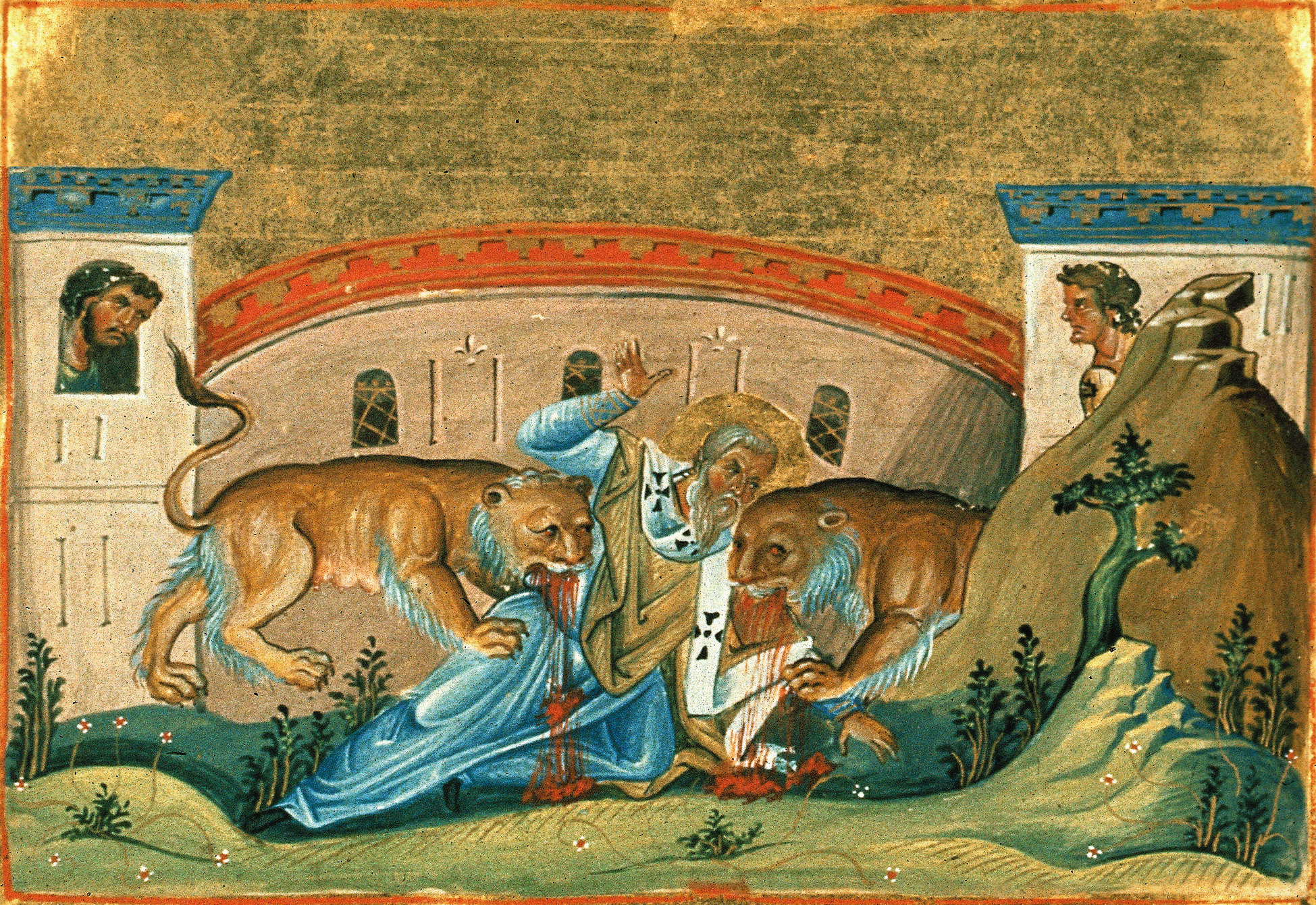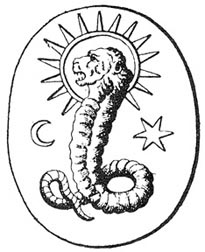|
First Epistle To Timothy
The First Epistle to Timothy is one of three letters in the New Testament of the Bible often grouped together as the pastoral epistles, along with Second Timothy and Titus. The letter, traditionally attributed to the Apostle Paul, consists mainly of counsels to his younger colleague and delegate Timothy regarding his ministry in Ephesus (1:3). These counsels include instructions on the organization of the Church and the responsibilities resting on certain groups of leaders therein as well as exhortations to faithfulness in maintaining the truth amid surrounding errors. Most modern scholars consider the pastoral epistles to have been written after Paul's death. Authorship The authorship of First Timothy was traditionally attributed to the Apostle Paul, although in pre-Nicene Christianity this attribution was often in dispute. He is named as the author of the letter in the text ( 1:1). Nineteenth- and twentieth-century scholarship questioned the authenticity of the letter, wi ... [...More Info...] [...Related Items...] OR: [Wikipedia] [Google] [Baidu] |
New Testament
The New Testament grc, Ἡ Καινὴ Διαθήκη, transl. ; la, Novum Testamentum. (NT) is the second division of the Christian biblical canon. It discusses the teachings and person of Jesus, as well as events in first-century Christianity. The New Testament's background, the first division of the Christian Bible, is called the Old Testament, which is based primarily upon the Hebrew Bible; together they are regarded as sacred scripture by Christians. The New Testament is a collection of Christian texts originally written in the Koine Greek language, at different times by various authors. While the Old Testament canon varies somewhat between different Christian denominations, the 27-book canon of the New Testament has been almost universally recognized within Christianity since at least Late Antiquity. Thus, in almost all Christian traditions today, the New Testament consists of 27 books: * 4 canonical gospels ( Matthew, Mark, Luke, and John) * The Acts of the ... [...More Info...] [...Related Items...] OR: [Wikipedia] [Google] [Baidu] |
Ignatius Of Antioch
Ignatius of Antioch (; Greek: Ἰγνάτιος Ἀντιοχείας, ''Ignátios Antiokheías''; died c. 108/140 AD), also known as Ignatius Theophorus (, ''Ignátios ho Theophóros'', lit. "the God-bearing"), was an early Christian writer and Patriarch of Antioch. While en route to Rome, where he met his martyrdom, Ignatius wrote a series of letters. This correspondence now forms a central part of a later collection of works known to be authored by the Apostolic Fathers. He is considered to be one of the three most important of these, together with Clement of Rome and Polycarp. His letters also serve as an example of early Christian theology. Important topics they address include ecclesiology, the sacraments, and the role of bishops. Life Nothing is known of Ignatius' life apart from what may be inferred internally from his letters, except from later (sometimes spurious) traditions. It is said Ignatius converted to Christianity at a young age. Tradition identifies ... [...More Info...] [...Related Items...] OR: [Wikipedia] [Google] [Baidu] |
Irenaeus
Irenaeus (; grc-gre, Εἰρηναῖος ''Eirēnaios''; c. 130 – c. 202 AD) was a Greek bishop noted for his role in guiding and expanding Christian communities in the southern regions of present-day France and, more widely, for the development of Christian theology by combating heterodox or Gnostic interpretations of Scripture as heresy and defining the Catholic and Orthodox doctrines of the Apostolic Churches. Originating from Smyrna, he had seen and heard the preaching of Polycarp, who in turn was said to have heard John the Evangelist, and thus was the last-known living connection with the Apostles. Chosen as bishop of Lugdunum, now Lyon, his best-known work is '' Against Heresies'', often cited as ''Adversus Haereses'', a refutation of gnosticism, in particular that of Valentinus. To counter the doctrines of the gnostic sects claiming secret wisdom, he offered three pillars of orthodoxy: the scriptures, the tradition handed down from the apostles, and th ... [...More Info...] [...Related Items...] OR: [Wikipedia] [Google] [Baidu] |
Terminus Post Quem
''Terminus post quem'' ("limit after which", sometimes abbreviated to TPQ) and ''terminus ante quem'' ("limit before which", abbreviated to TAQ) specify the known limits of dating for events or items.. A ''terminus post quem'' is the earliest date the event may have happened or the item was in existence, and a ''terminus ante quem'' is the latest. An event may well have both a ''terminus post quem'' and a ''terminus ante quem'', in which case the limits of the possible range of dates are known at both ends, but many events have just one or the other. Similarly, ''terminus ad quem'' ("limit to which") is the latest possible date of a non-punctual event (period, era, etc.), while ''terminus a quo'' ("limit from which") is the earliest. The concepts are similar to those of upper and lower bounds in mathematics. These terms are often used in archaeological and historical studies, such as dating layers in excavated sites, coins, historical events, authors, inscriptions or texts wher ... [...More Info...] [...Related Items...] OR: [Wikipedia] [Google] [Baidu] |
Gnosis
Gnosis is the common Greek noun for knowledge ( γνῶσις, ''gnōsis'', f.). The term was used among various Hellenistic religions and philosophies in the Greco-Roman world. It is best known for its implication within Gnosticism, where it signifies a spiritual knowledge or insight into humanity's real nature as divine, leading to the deliverance of the divine spark within humanity from the constraints of earthly existence. Etymology ''Gnosis'' is a feminine Greek noun which means "knowledge" or "awareness."Liddell Scottbr>entryγνῶσις, εως, ἡ, A. seeking to know, inquiry, investigation, esp. judicial, "τὰς τῶν δικαστηρίων γ." D.18.224; "τὴν κατὰ τοῦ διαιτητοῦ γdeetr." Id.21.92, cf. 7.9, Lycurg.141; "γ. περὶ τῆς δίκης" PHib.1.92.13 (iii B. C.). 2. result of investigation, decision, PPetr.3p.118 (iii B. C.). II. knowing, knowledge, Heraclit.56; opp. ἀγνωσίη, Hp. Vict.1.23 (dub.); opp. ἄγνοι� ... [...More Info...] [...Related Items...] OR: [Wikipedia] [Google] [Baidu] |
Clement Of Rome
Pope Clement I ( la, Clemens Romanus; Greek: grc, Κλήμης Ῥώμης, Klēmēs Rōmēs) ( – 99 AD) was bishop of Rome in the late first century AD. He is listed by Irenaeus and Tertullian as the bishop of Rome, holding office from 88 AD to his death in 99 AD. He is considered to be the first Apostolic Father of the Church, one of the three chief ones together with Polycarp and Ignatius of Antioch. Few details are known about Clement's life. Clement was said to have been consecrated by Peter the Apostle, and he is known to have been a leading member of the church in Rome in the late 1st century. Early church lists place him as the second or third bishop of Rome after Peter. The ''Liber Pontificalis'' states that Clement died in Greece in the third year of Emperor Trajan's reign, or 101 AD. Clement's only genuine extant writing is his letter to the church at Corinth (1 Clement) in response to a dispute in which certain presbyters of the Corinthian church had been deposed. ... [...More Info...] [...Related Items...] OR: [Wikipedia] [Google] [Baidu] |
Basilides
Basilides ( Greek: Βασιλείδης) was an early Christian Gnostic religious teacher in Alexandria, Egypt who taught from 117 to 138 AD, notes that to prove that the heretical sects were "later than the catholic Church," Clement of Alexandria''Stromata'', vii. 17 assigns Christ's own teaching to the reigns of Augustus and Tiberius; that of the apostles, of St. Paul at least, ends, he says, in the time of Nero; whereas "the authors of the sects arose later, about the times of the emperor Hadrian, and continued quite as late as the age of the elder Antoninus." He gives as examples Basilides, Valentinus, and (if the text is sound) Marcion. Yet his language about Carpocrates a few lines further on suggests a doubt whether he had any better evidence than a fallacious inference from their order in Irenaeus. He was acquainted with the refutation of Basilides by Agrippa Castor; but it is not clear, as is sometimes assumed, that he meant to assign both writers to the same reign. His ... [...More Info...] [...Related Items...] OR: [Wikipedia] [Google] [Baidu] |
Gnosticism
Gnosticism (from grc, γνωστικός, gnōstikós, , 'having knowledge') is a collection of religious ideas and systems which coalesced in the late 1st century AD among Judaism, Jewish and Early Christianity, early Christian sects. These various groups emphasized personal spiritual knowledge (''gnosis'') above the orthodox teachings, traditions, and authority of religious institutions. Gnostic cosmogony generally presents a distinction between a supreme, hidden God and a malevolent demiurge, lesser divinity (sometimes associated with the Yahweh of the Old Testament) who is responsible for creating the nature, material universe. Consequently, Gnostics considered material existence flawed or evil, and held the principal element of salvation to be direct knowledge of the hidden divinity, attained via mystical or esoteric insight. Many Gnostic texts deal not in concepts of sin and repentance, but with illusion and Enlightenment (spiritual), enlightenment. Gnostic writings flou ... [...More Info...] [...Related Items...] OR: [Wikipedia] [Google] [Baidu] |
Tatian
Tatian of Adiabene, or Tatian the Syrian or Tatian the Assyrian, (; la, Tatianus; grc, Τατιανός; syc, ܛܛܝܢܘܣ; c. 120 – c. 180 AD) was an Assyrian Christian writer and theologian of the 2nd century. Tatian's most influential work is the Diatessaron, a Biblical paraphrase, or "harmony", of the four gospels that became the standard text of the four gospels in the Syriac-speaking churches until the 5th-century, after which it gave way to the four separate gospels in the Peshitta version. Life Concerning the date and place of his birth, little is known beyond what Tatian tells about himself in his ''Oratio ad Graecos'', chap. xlii ('' Ante-Nicene Fathers'', ii. 81–82): that he was born in "the land of the Assyrians", scholarly consensus is that he died c. AD 185, perhaps in Adiabene. He travelled to Rome, where he first encountered Christianity. During his prolonged stay in Rome, according to his own representation, his abhorrence of the pagan cults sparked d ... [...More Info...] [...Related Items...] OR: [Wikipedia] [Google] [Baidu] |
Church History (Eusebius)
The ''Church History'' ( grc-gre, Ἐκκλησιαστικὴ ἱστορία; la, Historia Ecclesiastica or ''Historia Ecclesiae'') of Eusebius, the bishop of Caesarea was a 4th-century pioneer work giving a chronological account of the development of Early Christianity from the 1st century to the 4th century. It was written in Koine Greek, and survives also in Latin, Syriac and Armenian manuscripts. Church history The result was the first full-length historical narrative written from a Christian point of view. In the early 5th century, two advocates in Constantinople, Socrates Scholasticus and Sozomen, and a bishop, Theodoret of Cyrrhus, Syria, wrote continuations of Eusebius' church history, establishing the convention of continuators that would determine to a great extent the way history was written for the next thousand years. Eusebius' '' Chronicle'', which attempted to lay out a comparative timeline of pagan and Old Testament history, set the model for the other ... [...More Info...] [...Related Items...] OR: [Wikipedia] [Google] [Baidu] |
Pauline Epistles
The Pauline epistles, also known as Epistles of Paul or Letters of Paul, are the thirteen books of the New Testament attributed to Paul the Apostle, although the authorship of some is in dispute. Among these epistles are some of the earliest extant Christian documents. They provide an insight into the beliefs and controversies of early Christianity. As part of the canon of the New Testament, they are foundational texts for both Christian theology and ethics. Most scholars believe that Paul actually wrote seven of the Pauline epistles (Galatians, Romans, 1 Corinthians, 2 Corinthians, Philemon, Philippians, 1 Thessalonians), while three of the epistles in Paul's name are widely seen as pseudepigraphic ( First Timothy, Second Timothy, and Titus).New Testament Letter Structure fro < ... [...More Info...] [...Related Items...] OR: [Wikipedia] [Google] [Baidu] |





